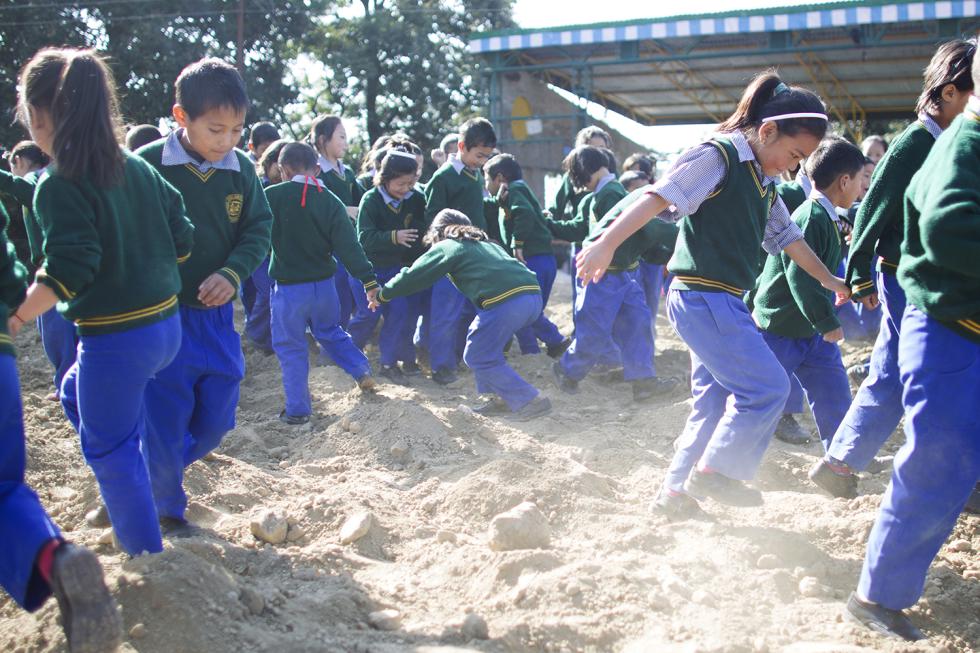I’ve lived in the Valley for some 18 years now, which is exactly as long as I lived under my parents’ roof. Everything in between there and here — my two homes, each of which, now, has had its own family life — has been a way station, a stop along a longer road. But as much as I’ve come to love the deep richness of Western Mass, there is a part of me that will always feel tied to the Rhode Island shore where I grew up.
For me, that connection is mostly about the ocean; I miss its enormity and endless white noise of waves, especially so in times of turmoil. For others, homeland might mean the traffic noise of Manhattan, or the dry desert heat of the American West, or the smell of a New Orleans gumbo. But if you’re from the States, you’re lucky: you can always go home again. Not everyone is able to do that.
That is the dilemma faced by Tibetan exiles, and the one that artist Tenzing Rigdol attempts to rectify in Bringing Tibet Home, a documentary film playing at 7 p.m. this Tuesday at Northampton’s Academy of Music. Rigdol’s tale is part art project and part political mission, but one always rooted in an elemental humanism born of a son’s love for his father.
When Rigdol’s father passed away in 2009, it was at a New York hospital, thousands of miles away from the homeland where he longed to take his last breath — a hope that political circumstances had long made impossible. In the wake of his father’s passing, Rigdol realized that his father’s dream was not only his, but that of innumerable Tibetans still living in exile.
Two years later, he came up with an idea that could reunite those exiles with their homeland. Rigdol’s audacious site-specific art installation, set in Dharamsala, India, was built on a seemingly simple idea: if the people can’t go to the land, the land must go to the people. “Our Land, Our People,” as the project was called, involved transporting 20,000 kilos of native Tibetan soil through Nepal and into Dharamsala, the epicenter of the Tibetan exile world. There, the exiles can be reunited with their literal land.
But what sounds simple is so often not, and when Rigdol tries to find a legal way to bring the soil out of Tibet he is shut down by Chinese authorities. Undaunted, he turns to a method at once more direct and more complicated: smuggling. But by trying to sneak the soil out undetected, Rigdol and his crew introduce the very real danger of capture and imprisonment. Not strictly religious by nature, Rigdol and the team find themselves relying on premonitions, prayers, and rituals as they strive to succeed. The result may have come too late for his own father, but Rigdol’s reunification was able to bring a sense of connection, however bittersweet, to many of those still longing for home.
Also this week: Two special shows worth noting come to Amherst Cinema and Cinemark Theaters on Wednesday. At Amherst, Michel Gondry’s (Eternal Sunshine of the Spotless Mind) film The Science of Sleep — about an introvert with a wild dream life — will screen as part of the Science on Screen series, which pairs films with local lecturers. This one features Dr. Rebecca Spencer, an associate professor of psychological and brain sciences at UMass Amherst, who will talk about the nature of sleep and dreams. And at Cinemark-owned theaters in Hadley and Springfield, the Back to the Future series gets a triple-header showing to commemorate the date (Oct. 21, 2015) to which Michael J. Fox’s Marty McFly traveled in the second of the three films. The shows get underway at 4:30 p.m., with a smattering of discounts and bonuses for those signing up for all three features.•
Jack Brown can be reached at cinemadope@gmail.com.




